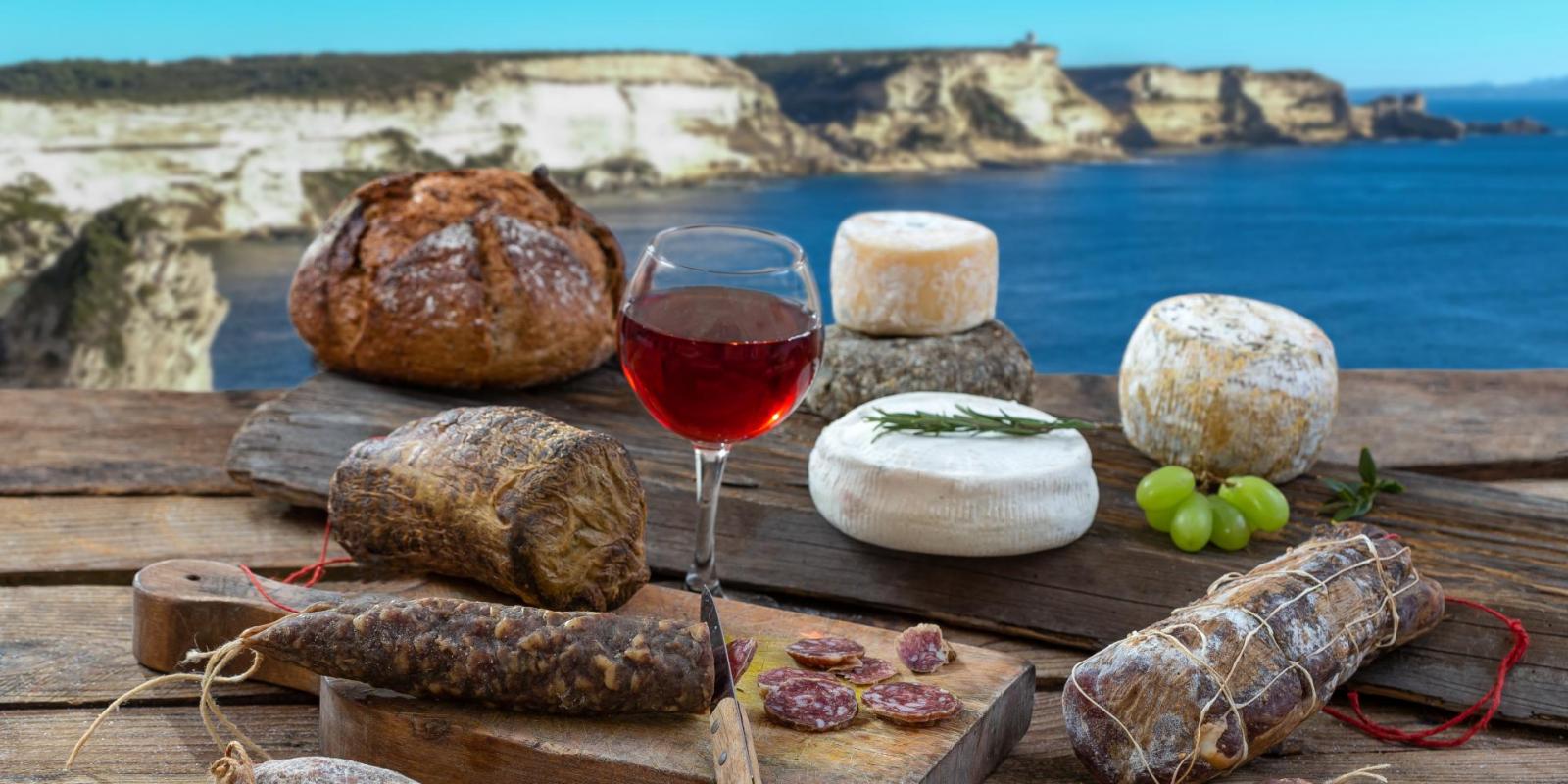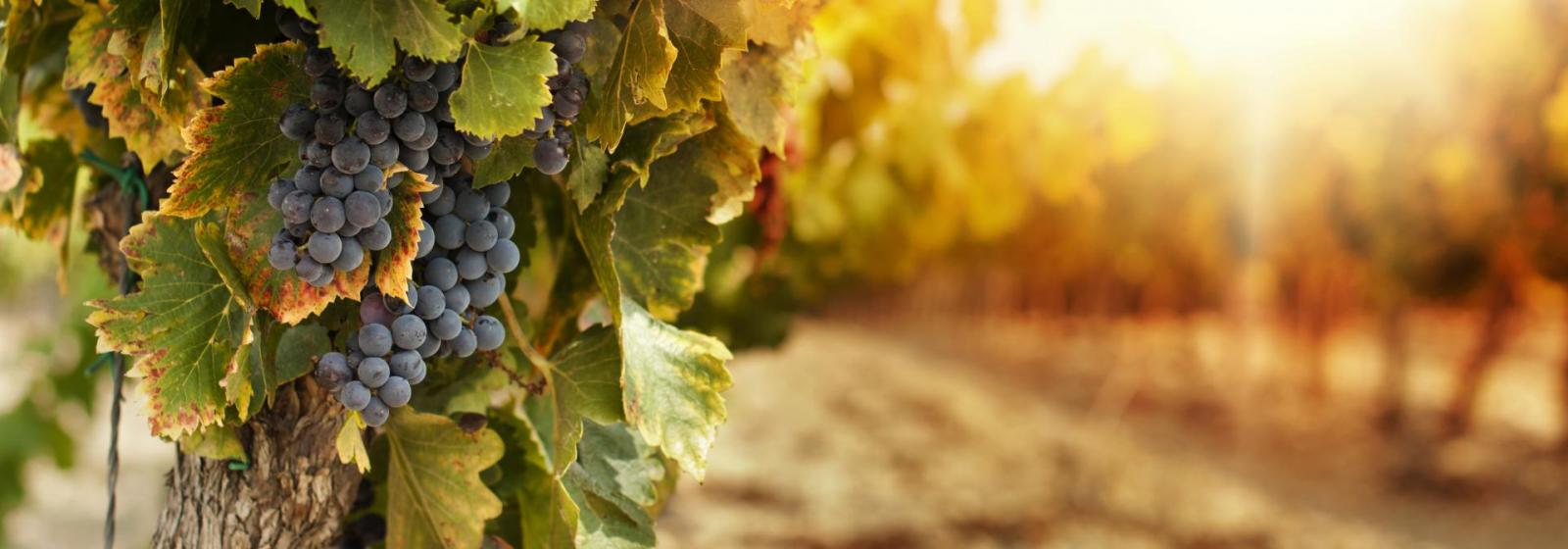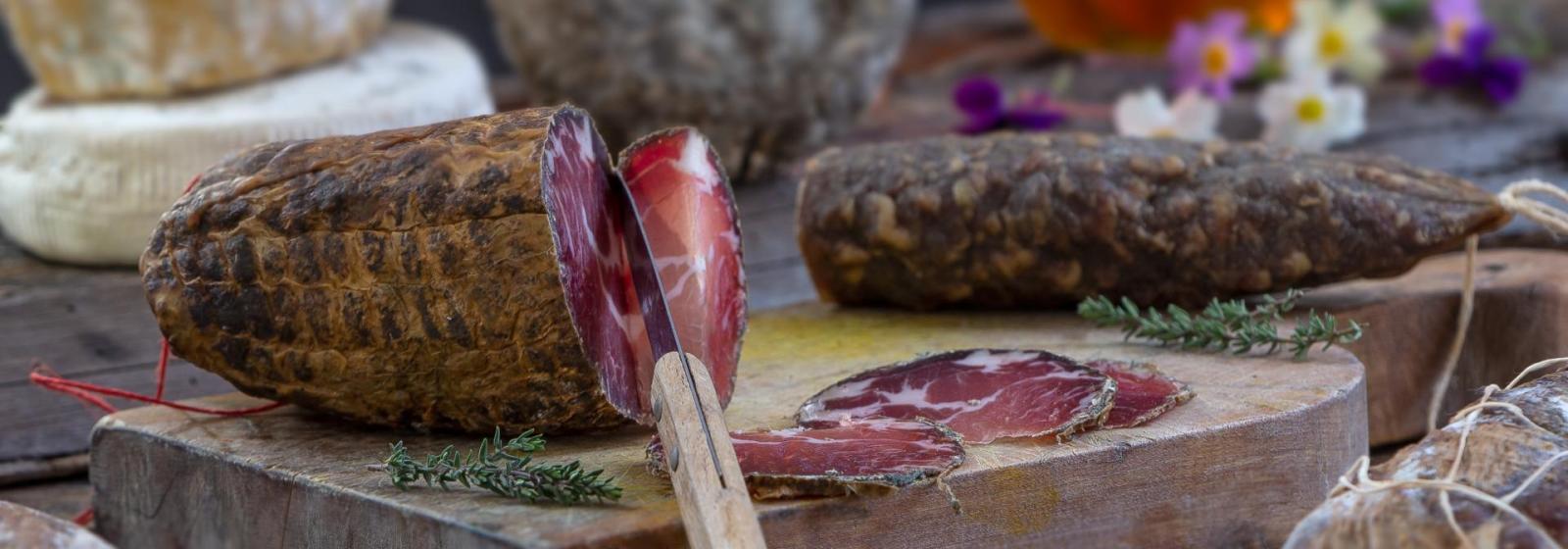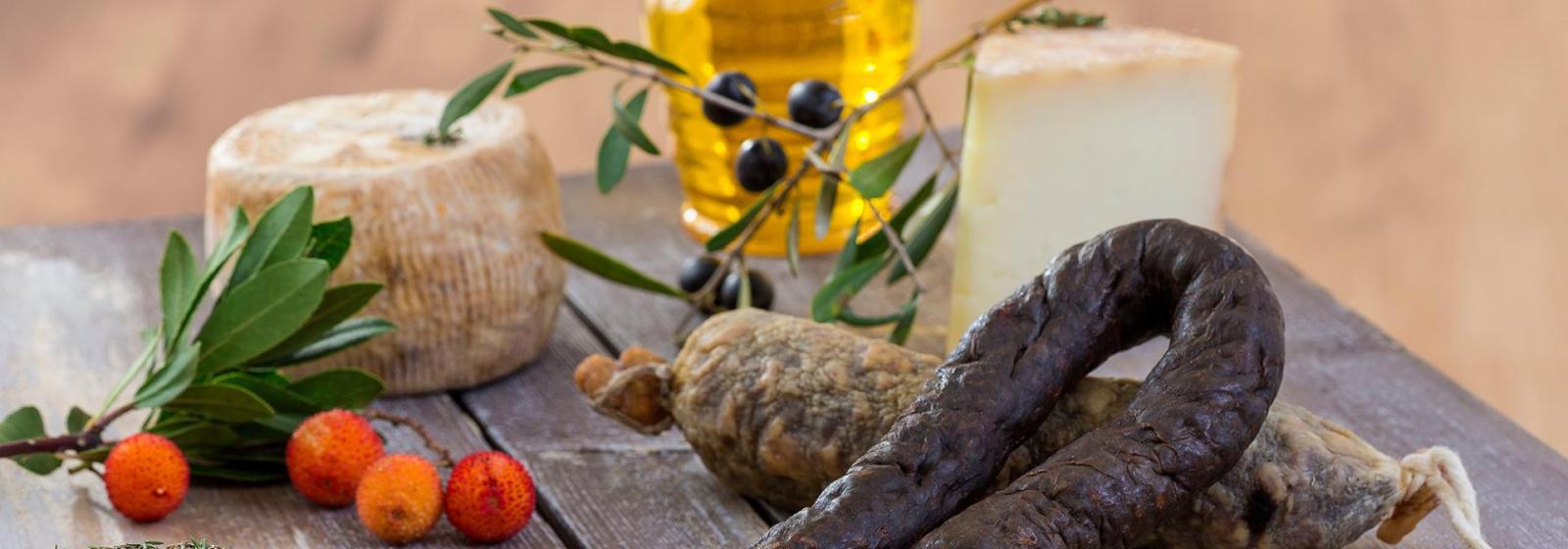Corsica, an island of flavours
Corsica often surprises people with its landscapes, but it would not be Corsica without its characteristic cuisine. Corsica is closely associated with the foodstuffs it produces, such as olive, the fruits of the vine, chestnuts and citrus fruit, as well as cured pork products, ewe's milk and cheese and many other things besides. When you stay at Pertamina Village, you will be just around the corner from the people behind this industry.
Rich and diverse vineyards
Since Corsica is a mountain rising from the sea, each of its many valleys is exposed differently to the elements and has its own microclimate. It furthermore offers a broad diversity of soils that are particularly suitable for growing grapes. In addition, Corsica has another treasure: over 30 varieties of grape with evocative names like Sciaccarellu, Niellucciu and Vermentinu. The combination of these different climates, these typical grape varieties and the expertise of our winemakers produces fine, powerful red wines that age beautifully, characterful rosés and incredible white wines.
Corsican deli meats, famous the world over
Deli meats, a core element in Corsican cuisine, owe their fame to the local pigs. These pigs are partially allowed to roam free and feed on the food they find in the maquis, which gives their meat a unique, subtle and fragrant taste, as well as an undeniable quality. Producers based in the centre of the island make prisuttu, lonzu, coppa and the famous figatellu, a delicious pork liver sausage. Here is a description of the different deli meats available:
- Prisuttu: traditional lean ham.
- Coppa: pork loin cut from the neck and streaked with fat, salted and dried in a natural casing. The surface is rubbed with pepper after it has been salted.
- Lonzu: pork fillet with an outer layer of fat.
- Figatellu: this sausage is made from pork liver (and other offal) and can be eaten raw but is typically served grilled with polenta.
- Salamu (smoked sausage) and salsiccia (spiced dried sausage).
Flagship Corsican delicacies
Cheese
Corsica, formerly known as the "Isle of Shepherds”, has conserved its noble heritage of farming Corsican breeds of dairy ewes and goats. This heritage stems from the very mountainous nature of the island: farming small ruminants is one of the best ways to get the most out of the land.
Since pastures form the basis of the diet for the island’s flocks, the island’s rich flora, the diversity of its landscapes and its lush vegetation, reinforced by the practice of transhumance (changing altitude), give Corsican milk some unique organoleptic qualities.
Honey
“Mele di Corsica”, or Corsican honey, is a complex floral product with markers typical of the island's flora.
By moving the hives from the sea to the mountains and back as the seasons change, Corsican beekeepers gather a honey that reflects a landscape, a season, a blossom and an original flavour. From sweet to bitter and from delicate to lingering, Corsican honey is always a treat for the palate.
Oliu di Corsica
“Characterised by an extremely smooth mouthfeel created by harvesting the fruits when they are very ripe and by an exceptional palette of flavours that evoke the intense aromas of the Corsican maquis, Corsican Olive Oil is covered by a protected designation of origin and comes in two varieties:
- a “fresh” version, made from olives “picked from the trees”, with flavours of almond, artichoke, hay, dried fruit and apple;
- a “smooth” version, made from olives “picked in the traditional style” using nets to gather naturally falling fruit, with flavours of black olive, dried fruit and maquis flowers...”
Corsican olive oil is delicate enough to accompany dishes with subtle flavours and bring those flavours out.
The Route of the Senses
This Route proposes hikes, visits to Corsican farms, addresses of affiliated farm hostels and bed and breakfasts, craft workshops, unmissable culture and nature outings, as well as restaurants awarded the “Gusti di Corsica” label, and shops where you can find organic essential oils...The Route of the Senses is a Quality Charter that lists providers within microregions and is a guarantee of original products.
Arts and crafts
Arts and crafts in Corsica combine top-quality raw materials with expertise and creativity.
Given the island’s traditions, craftsmen will naturally turn to certain materials such as earth, wood (flotsam) and metal to make ironwork, traditional Corsican knives, furniture (particularly from chestnut wood) and practical or decorative pottery.
There are however numerous other activities that reflect the wealth and diversity of Corsica's arts and crafts: knitting and weaving the wool of Corsican ewes, glassmaking, making stringed instruments, jewellery making, basketwork, rebinding old books, toys, decorations for children's bedrooms, etc.





